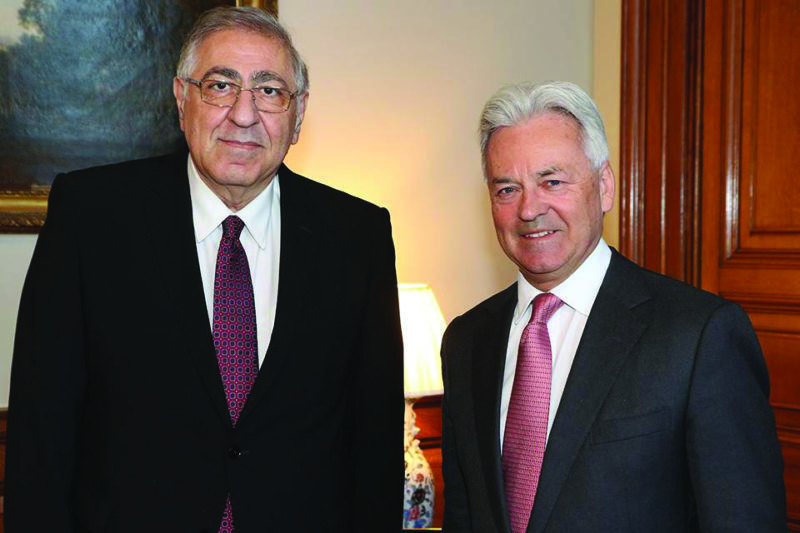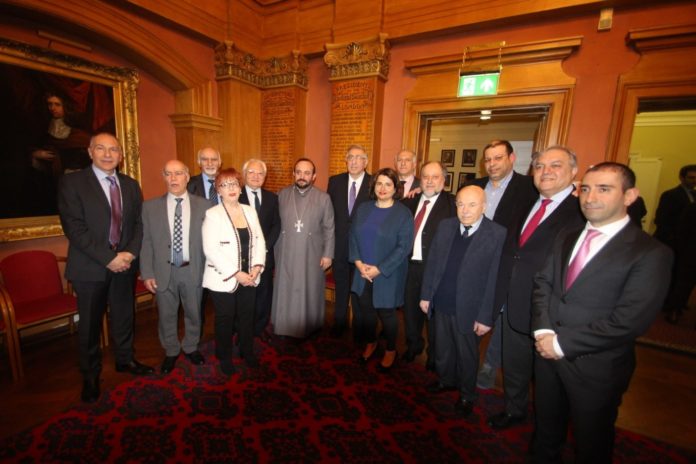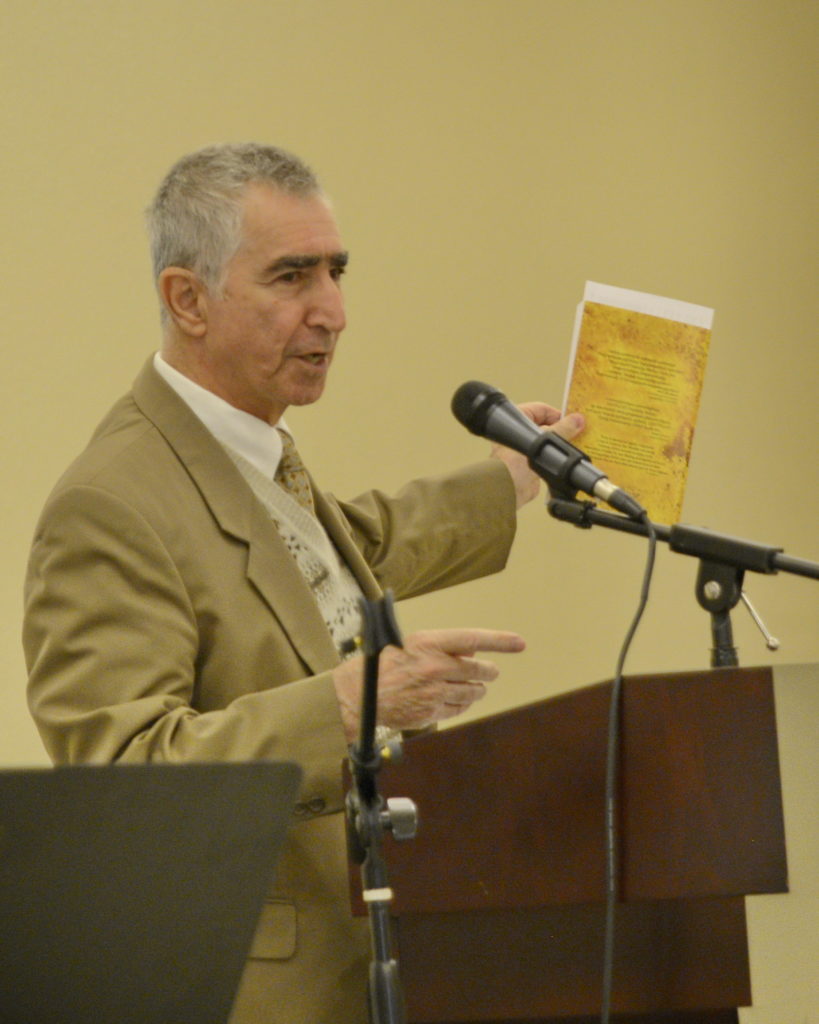Yogurt is an ancient food, used by peoples in Asia, Europe, and the Middle East across the millennia. Yogurt first appeared during the Neolithic period, around 5,000–10,000 years ago, probably as a result of milk naturally souring in warm temperatures (thank you warm temperatures and souring milk). Evidence from ancient pottery shows that Neolithic people were using the pots to store milk.
As a fermented food, yogurt was a great way to preserve milk, since the acidity slows the growth of harmful bacteria. Yogurt was a well-known food in the Greek and Roman empires and has played a major role in Mediterranean cuisine since 800 BC.
Yogurt making began in the United States in 1929 when Rose and Sarkis Colombosian, Armenian immigrants who lived in Andover, Massachusetts, started Colombo and Sons Creamery. General Mills purchased the company in 1993 and incorporated the yogurt division as Yoplait Colombo, based in Methuen. Based on traditional Armenian cooking methods, it was the first commercially produced yogurt in the U.S. The business grew in the 1960s due to the increased awareness of the many health benefits of yogurt. In 1993, Colombo Yogurt was purchased by General Mills. On January 29, 2010, General Mills announced that it was dropping the Colombo brand to focus more on its Yoplait yogurt. It ended shipments on February 12, 2010. General Mills still produces soft-serve frozen yogurt under the Colombo name.
Yogurt Lemon Cake
Ingredients:
2 1/2 cup all-purpose flour, sifted
1 1/2 cups white or brown sugar
1 stick (1/2 cup) butter, at room temperature
1 cup plain yogurt
2-3 large eggs, beaten
1/4 cup fresh lemon juice
1 tablespoon grated lemon zest
2 teaspoons baking powder
1 teaspoon vanilla extract
1 teaspoon each cinnamon, allspice and nutmeg
1 cup blanched and chopped almonds or chopped walnuts, optional
Pinch of salt, optional
Preparation:
Preheat oven to 350 degrees.
Cream sugar and butter together in a large bowl. Combine remaining ingredients and pour in a greased and floured 9X13-inch baking pan. Bake until top is light chestnut color and a pick inserted in the center comes out smooth, or about 30-35 minutes.
Remove from oven and top with lemon glaze while cake is still warm. Serve with fresh whipped cream, assorted berries, and fresh sliced fruit.
Lemon Glaze
Combine all ingredients together in a bowl:
1 1/2 cups powdered sugar
2-3 tablespoons lemon juice
2 tablespoons water
1 tablespoon lemon zest
Serves 12.
*Christine’s recipes have been published in the Fresno Bee newspaper, Sunset magazine, Cooking Light magazine, and at http://www.thearmeniankitchen.com/
![]()
Spicy Yogurt Cake
Here’s another outstanding yogurt cake recipe contributed by Robyn Kalajian at: https://www.thearmeniankitchen.com/
Robyn says, “Recently I added yogurt to brownie mix, which worked extremely well, then my friend made a delicious frosting using labne rather than cream cheese to top her cupcakes. I searched through my recipe file and rediscovered a recipe for this spicy yogurt cake that I hadn’t made in a very long time. For this recipe, I cut down on the original amount of butter and added 2% plain yogurt in its place to see how it would work.”
“When purchasing commercially prepared yogurt, be sure the label mentions ‘live, active cultures,’ which indicates a more natural, health-beneficial product,” she adds.
Yield: 2 (8-inch) round cakes
Ingredients:
2 1/4 cups all-purpose flour
1 teaspoon baking soda
1 teaspoon ground cinnamon
1 teaspoon ground allspice
1/4 teaspoon ground cloves
1/4 teaspoon salt
1 stick (1/2 cup) butter, at room temperature
1 cup light brown sugar
4 tablespoons honey
1 teaspoon vanilla extract
2 eggs
1 cup 2% plain yogurt – do not use Greek-style yogurt
Preparation:
Preheat oven to 350°F . Lightly grease and flour 2 (8-inch) round cake pans. Shake out excess flour.
In a mixing bowl, sift together the flour, baking soda, spices and salt. Set aside.
In the bowl of an electric stand mixer, cream together the butter, brown sugar, honey, and vanilla at high speed until light and fluffy. Add eggs, one at a time, beating well after each addition. Using a low speed, add the flour mixture alternately with the yogurt, beating until mixture is smooth. Pour batter into prepared pans and bake for 25 to 30 minutes, or until a toothpick inserted in the center comes out clean. Cool in pan 5-8 minutes; remove from pan and cool completely on wire rack.
To serve, dust with confectioners’ sugar.
For this recipe: https://www.thearmeniankitchen.com/2011/09/spicy-yogurt-cake.html
For Robyn’s homemade madzoon recipe: https://www.thearmeniankitchen.com/2009/05/homemade-madzoon-yogurt-to-non.html
For more yogurt recipes: https://www.thearmeniankitchen.com/search?q=yogurt
![]()
Buzz Baxter’s Apricot Yogurt Cake
Tart, moist and delicious, this cake recipe is courtesy of the late Dr. Buzz Baxter from his very popular food website, the Gutsy Gourmet.
Ingredients:
2 8-ounce containers plain yogurt
2 cups all-purpose flour
1 1/2 teaspoons double-acting baking powder
1/2 teaspoon baking soda
1 stick (1/2 cup) unsalted butter, softened
3/4 cup sugar
2 large eggs
3/4 cup dried apricots, chopped fine
1 cup walnuts, chopped fine
About 1/2 cup orange honey syrup (recipe follows)
Fresh mint sprigs for garnish
Preparation:
Let the yogurt drain in a fine sieve set over a bowl, covered and chilled, overnight and measure one cup of the drained yogurt, reserving the remaining yogurt for another use.
Preheat oven to 350°F. and butter and flour a 10-inch spring form pan. Into another bowl sift together the flour, the baking powder, the baking soda, and a pinch of salt. In the bowl of an electric mixer cream the butter with the sugar until the mixture is light and fluffy, beat in the eggs, one at a time, beating well after each addition, and beat in the one cup drained yogurt, beating until the mixture is just combined.
Add the flour mixture, beat the batter until it is just combined, and stir in the apricots and walnuts.
Spoon the batter into prepared pan and bake in the middle of the oven for 45-50 minutes, or until a tester comes out with a few crumbs adhering to it.
Cool cake on a rack set over foil, pour orange honey syrup over it, and let cake absorb the syrup.
The cake may be made two days in advance and kept in the pan covered with plastic wrap and foil and chilled. Remove the side of the pan and garnish the cake with mint sprigs.
Note: This recipe produces a coarse-crumbed cake; for ease of slicing, dip your knife in hot water before cutting each serving.
Serves 8-10.
Orange Honey Syrup
1 cup honey
1/2 cup fresh orange juice
1/2 cup water
1 1/4 teaspoons minced fresh orange zest
2-3 tablespoons Manto (Greek orange herb-flavored liqueur, made by Metaxa)
Preparation:
Pour the milk into a saucepan and bring to a boil, stirring constantly. When it comes to a boil, add 1/2 pint of heavy cream, and pour into an earthen bowl or Pyrex dish. When it is lukewarm (105-110 degrees), stir the madzoon starter with a spoon until it is smooth and dilute it with some of the warm milk. Pour this mixture into warm milk and stir.
Wrap the warm milk (with yogurt starter), and leave it in a warm place, undisturbed, for at least 8 to 10 hours. Yogurt should be set by then. Place pot in refrigerator until cold and ready to serve.
*Buy the starter as plain yogurt at the supermarket or save a cup or two of homemade yogurt to use as a starter each and every time you want to make it again.
Serves 6-8.
The post Recipe Corner: Yogurt Cakes appeared first on The Armenian Mirror-Spectator.














